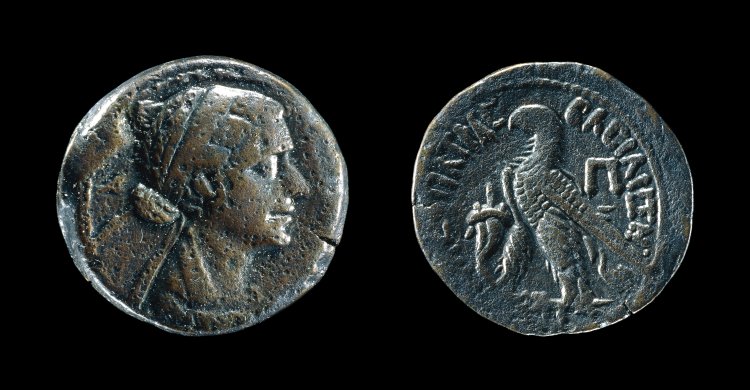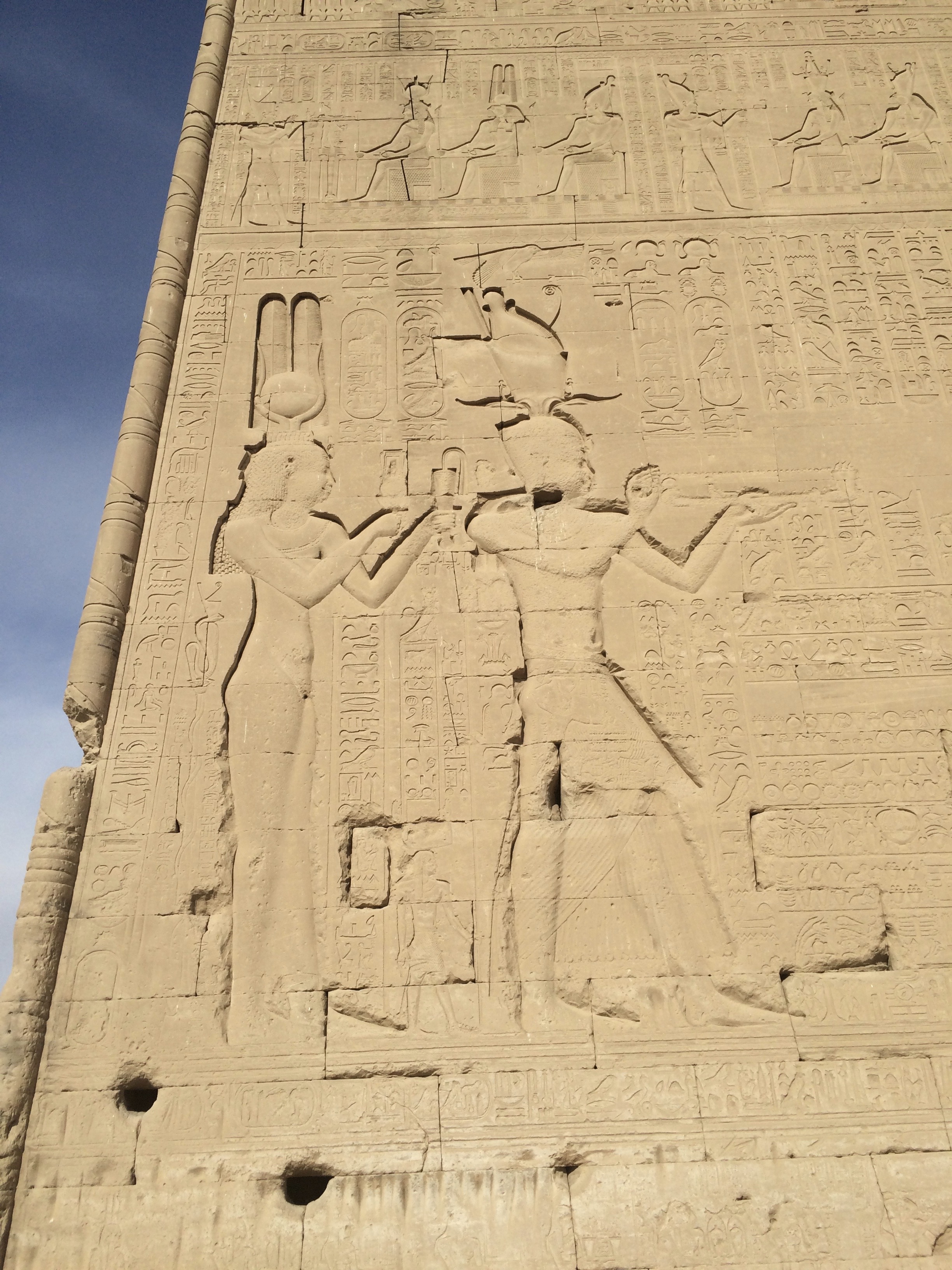Cleopatra VII: Scholar, Patron, Queen
Alexander the Great conquered Egypt in 332 BCE, altering the political panorama of the eastern Mediterranean and the ancient Near East for the centuries to come. One of Alexander’s generals, Ptolemy Lagos, identified Egypt as one of the richest areas of Alexander’s empire. He first served as regent for Alexander’s half-brother, Philip, and his son, Alexander IV, but soon took over the throne himself, inaugurating a new dynasty that would endure the next three centuries. All the subsequent kings in the dynasty bore the name Ptolemy after Ptolemy Lagos, distinguishing themselves with different epithets.
As notable as the Ptolemaic kings were the queens of the period. The queen whose memory has persisted as the most notorious character of this period after Alexander himself is Cleopatra VII. The daughter of Ptolemy XII, Cleopatra ruled as the last monarch of the dynasty before Egypt became a province of the Roman empire. The power of Egypt had dwindled from its peak at the beginning of the dynasty by the time Ptolemy XII assumed the throne. Rome had been meddling in the Egyptian affairs since the second century BCE, intimately involved in both internal and external issues of the Ptolemaic dynasty. After the death of Ptolemy XII, Julius Caesar and Gaius Pompey assumed the dynastic problems between Cleopatra and her brother Ptolemy XIII into their own quarrels. When Ptolemy XIII assassinated Pompey, Caesar sided with Cleopatra. Ptolemy XIII was defeated and killed.
Cleopatra then married her other brother, Ptolemy XIV, who only lived for a few more years. At this time, she was already involved romantically with Caesar, with whom she had a son, Ptolemy XV Caesarion. Caesar was murdered in Rome in 44 BCE, jeopardizing Cleopatra’s position in the international arena. She allied herself with Mark Antony and supported him in his military campaigns. They had three children, and Egypt enjoyed peace for nearly a decade. This shifted abruptly when Octavian, the adopted son of Caesar, asserted himself as Caesar’s legitimate successor and declared war against Cleopatra and Mark Antony. Octavian finally defeated them in the battle of Actium in 31 BCE, and Cleopatra ended her own life a few months later.
After Octavian’s victory, different Roman poets narrated the events that led to Rome’s annexation of Egypt. The first were those close to the emperor in the immediate aftermath but the account was retold over and over for centuries. In these narratives, poets cast a positive light over Julius Caesar and Mark Antony, both fellow Romans, though Marc Antony’s representation is less heroic and more pitiful. Cleopatra’s character is generally presented as an overly ambitious, hedonistic seductress, who manipulated both men to achieve her goals. Authors, such as Virgil, Josephus, Plutarch and Cassius Dio, elaborated different portraits of the queen but only described her love story with the two Romans. Cleopatra’s tragic love with Caesar and Mark Antony survived as the sole focus of her narrative within Western tradition, from Shakespeare to Mankiewicz.
Yet, a completely different and less known tradition about Cleopatra has come down to us in some Greek sources from the first centuries CE, later picked up by Arabic authors. While the Western perspective of Cleopatra originated in Rome – the queen as the foil for the ideal Roman matron – this alternative tradition passed through Greek texts seems to have developed in Egypt and probably derived, at least in part, from Cleopatra’s own self-presentation. The references to Cleopatra’s love life, or even her appearance, are completely absent in it. Instead, she is depicted as a scholar and a teacher, knowledgeable in medicine, magic and alchemy, participating in scholarly exchanges with other philosophers.
In the early alchemical tradition, a Cleopatra that may be identified with the Ptolemaic queen is mentioned together with other historical and mythical figures – Isis, Hermes and Mary the Jewess – all ancient practitioners of alchemy. Historical alchemists, such as Zosimos of Panopolis, refer to these authors as sources of authority. There are two known alchemical works in Greek that refer directly to Cleopatra. The first is a single page with diagrams transmitted by means of the byzantine manuscript Marcianus graecus 299, dating to the 10th or 11th century CE. The page is titled “Cleopatra’s gold-making”, and the diagrams represent alchemical axioms, an ouroboros and different depictions of alchemical apparatus. The second work is a treatise in which a high priest and philosopher called Comarius teaches Cleopatra, who is referred as“Cleopatra the Wise,” the divine art of producing the stone of the philosophers. She then puts these instructions into practice. The text continues with Cleopatra’s instruction in the form of a dialogue of a group of philosophers, including, anachronistically, Ostanes, the Persian sage. This dialogue is known in Arabic as well. In later medieval Arabic sources Cleopatra is described as an able ruler, a scientist and a great builder, though she is wrongly credited with the construction of the Lighthouse of Alexandria. They attribute to her the authorship of treatises on drugs and cosmetics, medicine, mathematics and toxicology. The Arabic romance story of Queen Qaruba intertwines elements from the real life of Cleopatra with other fictional stories, similar to the Greek Alexander Romance, very popular in the Middle Ages.
While this parallel tradition romanticizes the portrait of the queen, it reveals aspects of her life beyond her involvement with Rome. Even if Cleopatra may not have been a scholar, this tradition attests to her patronage of intellectual pursuits in her court. Incorporating these lesser known sources to the Egyptological discussion enhances our knowledge of Cleopatra’s life and later tradition.
Recommended Reading
Chauveau, Michel. Cleopatra: Beyond the Myth. Ithaca: Cornell University Press, 2002.
El Daly, Okasha. Egyptology: The Missing Millennium : Ancient Egypt in Medieval Arabic Writings. London: UCL Press, 2005. See especially pages 131–137.
Lindsay, Jack. The Origins of Alchemy in Graeco-Roman Egypt. London: Muller, 1970. See especially pages 253–277.
Tyldesley, Joyce A. Cleopatra: Last Queen of Egypt. New York: Basic Books, 2008.


